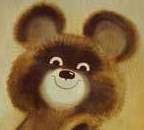I dig complexity so that the player doesn't have to. All
s/he has to do is Role Play. Perception type checks are done in secret to keep
players in suspense. I based the PC stats on true life research, and added a
few derived ones to reflect the latest research in psychology etc. Some of them
are derived, and I used non-linear algebra to derive formulas to model those to
match the real world relationships between different abilities. The real world
basics are as follows: Physical abilities can be trained so you can (and has
been done since Middle Ages) have STR, CON, and a version of DEX all 18 in a
few years of training. Real Life abilities are: Physical Strength, Endurance,
and Agility (really measures Flexibility and not tight rope walking etc). Intelligence
based abilities, the FIVE forms of human intelligence ARE a zero sum game - you
CAN NOT train to be 18 in all five. Genetics will hold you back. ALSO, there is
a measurable genetic trait called HARDINESS. It determines how well you resist
emotional trauma and psychological depression, resist colds and fevers in the
arctic environment and how quickly you recover from strokes and heart attacks.
Hardiness. Not quite CON. The 5 forms human IQ are as follows: 1 - Reading
Comprehension and Math ability, measured by the IQ test, INT in D&D; 2 -
Ability to take apart and put back together mechanisms - wrist watches and
automobile engines. Thinking in terms of putting things together, Manipulative
IQ or D&D DEX; Then there is the
3 - Tumbling Ability - ability to be aware of one's body in space - to
be a gymnast or an Acrobat - what I call AGILITY, a derived stat in the game
from STR and DEX, because to be agile in real life, you have to be both STRong
and FLEXible. 4 - Drawing Ability - ability to accurately represent ratios and
objects when drawing in three dimensions. I called this one ART and it is a
non-linear derived stat. 5 - Interpersonal Intelligence - Ability to read
peoples' non-verbal cues facial expressions and the effect on the person's life
is the same as CHA. There is a part of the brain dedicated to reading faces in
both humans and other animals. The difference between a cougar and a house cat
is that the house cat's portion of the brain dedicated to face reading is 15
times the size of the wild cat's.
